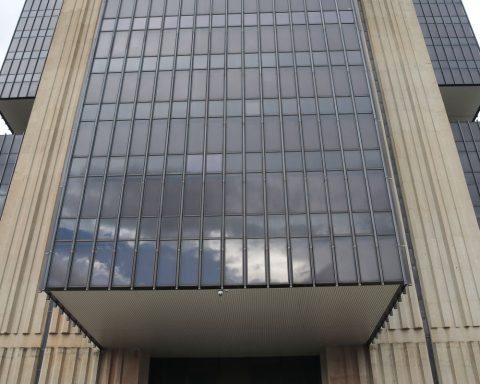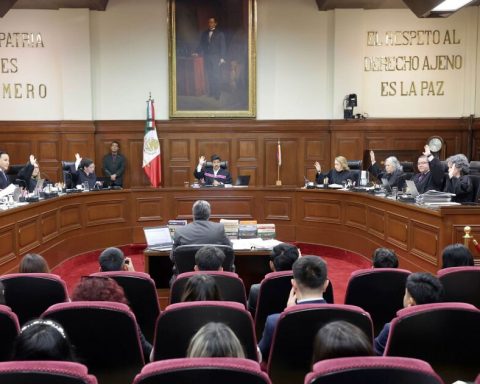The Economic Policy Secretariat (SPE) of the Ministry of Finance increased the growth estimate for the Brazilian economy this year from 3.2% to 3.3%, according to the Macrofiscal Bulletin, released this Monday (18) by the department . In relation to official inflation, measured by the Broad National Consumer Price Index (IPCA), the forecast increased from 4.25% to 4.40%.
In relation to the performance of the economy, there was a slight increase in the expectation of expansion of the Gross Domestic Product (GDP, sum of the wealth produced in the country) in the third quarter, which led to a revision in the growth estimate for the year. For the third quarter, the growth projection rose from 0.6% to 0.7%, “still implying a moderate slowdown in the pace of activity at the margin”.
“The change in projection reflects small revisions in growth estimates for the agricultural and services sector. At the margin, the outlook is for a slowdown in the pace of growth, mainly due to the strong expansion observed in the second quarter”, explained the SPE.
In the second quarter, the GDP result, released by the Brazilian Institute of Geography and Statistics (IBGE) was above expectations, with an increase of 1.4%leading to a major review of the economic expansion in the latest bulletinfrom September, with a statistical carryover (positive impact of the result from one quarter to the following) of 2.5% in the current projection.
For 2025, the growth estimate was 2.5%. The SPE attributes the lower growth next year to prospect of a new cycle of increases in the Selic ratethe basic interest rates of the economy, defined by the Monetary Policy Committee (Copom) of the Central Bank.
In turn, expectations for the grain harvest and extractive production in 2025 improved significantly, “offsetting the negative effect of the more contractionary monetary policy on activity”.
Sectors
For the next two quarters, the SPE projects an increase in activity at a slower pace than that observed in the first two quarters. The growth forecast for the productive sectors barely changed in this edition of the Macrofiscal Bulletin.
For agriculture, the expected variation in GDP remains negative, but the expected contraction, which was 1.9%, improved to 1.7%. According to the document, the new number already incorporates upward revisions in expectations for the year’s cotton harvest and livestock products, which more than offset the negative effects resulting from the downward revision in the expected production of oranges, wheat, coffee and sugar cane.
For industry, growth expectations remained at 3.5%, driven by the “good performance” projected for the manufacturing and construction industries, in contrast to the slowdown projected for the extractive industry and the production and distribution of electricity and gas .
“The good performance projected for the manufacturing industry reflects the expansion in credit concessions to companies and lower interest rates compared to 2023, in addition to investment stimulus policies such as the new PAC [Programa de Aceleração do Crescimento] and accelerated depreciation. For the growth of construction, the expansion of the Minha Casa, Minha Vida program stands out, in addition to the increase in real income and the growth in formal job vacancies”, explained the SPE.
The projection for the expansion of services increased slightly, from 3.3% to 3.4%. According to the secretariat, after the release of the GDP for the second quarter, the statistical charge for growth in the services sector increased to 3%.
“The expectation is that this sector will continue to expand until the end of the year, driven by the strong job market and better credit conditions for families compared to the previous year. However, there should be a slowdown in the pace of growth of services at the margin in the next two semesters, reflecting both the strong basis for comparison and the reduction in stimuli coming from the real increase in the minimum wage and the payment of court orders”, says the bulletin.
Inflation
The SPE forecast for the IPCA went from 4.25% to 4.4%, remaining close to the ceiling of the inflation target for the year. Defined by the National Monetary Council (CMN), the target is 3%, with a tolerance range of 1.5 percentage points up or down, that is, the lower limit is 1.5% and the upper limit is 4.5 %.
According to SPE, the acceleration in prices of more volatile items, more affected by exchange rates and climate, such as food, contributed to the increase in estimates. However, by the end of the year, there should be a slowdown in monitored prices, mainly reflecting expected changes in electricity tariff flags. After two months at the red level, the tariff flag for November will be yellow.
“From November onwards, inflation accumulated over 12 months should fall again. This scenario considers a green flag for electricity tariffs in December and may be affected by the occurrence of new weather events”, explains the bulletin.
In relation to other inflation indices, the SPE also revised the estimates. The National Consumer Price Index (INPC), used to establish the value of the minimum wage and correct pensions, is expected to end this year with a variation of 4.4%, slightly higher than the 4.1% released in the previous bulletin, in September.
The projection for the General Price Index – Internal Availability (IGP-DI), which includes the wholesale sector, the cost of civil construction and the final consumer, accelerated from 3.8% to 6.4% this year. As it reflects wholesale prices, the IGP-DI is more susceptible to variations in the dollar.
According to the SPE, the disinflation process is expected to continue in the coming years, with a slowdown in free and monitored prices. For 2025, the IPCA inflation estimate increased from 3.3% to 3.6%, “in order to incorporate greater inertial effects, the expected increase in animal protein inflation, reverberating the prospects for the cattle slaughter cycle , and the impacts of the most recent exchange rate depreciation”.
Projections for INPC and IGP-Di for 2025 are at 3.4% and 4%, respectively.
The numbers from the Macrofiscal Bulletin are used in the Revenue and Expense Assessment Report, which will be released on the 22nd. Published every two months, the report provides forecasts for the execution of the Budget based on revenue performance and expenditure forecasts. of the government, with GDP and inflation entering into some calculations. Based on compliance with the primary deficit target and the spending limit of the new fiscal framework, the government blocks or releases some non-mandatory spending.
Listen on National Radio Agency:

















